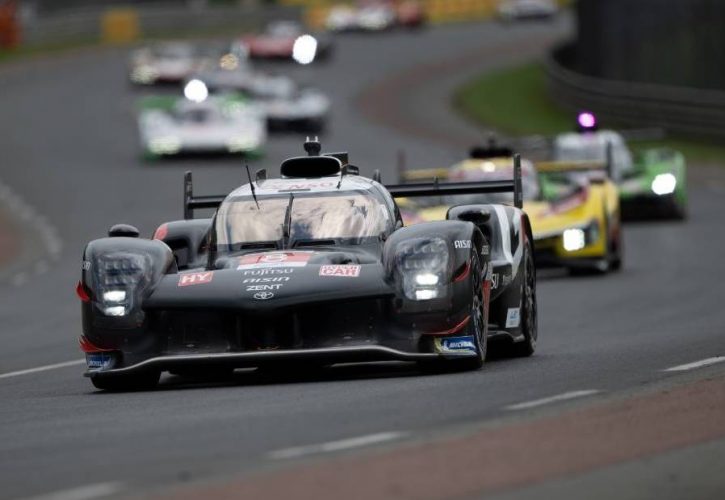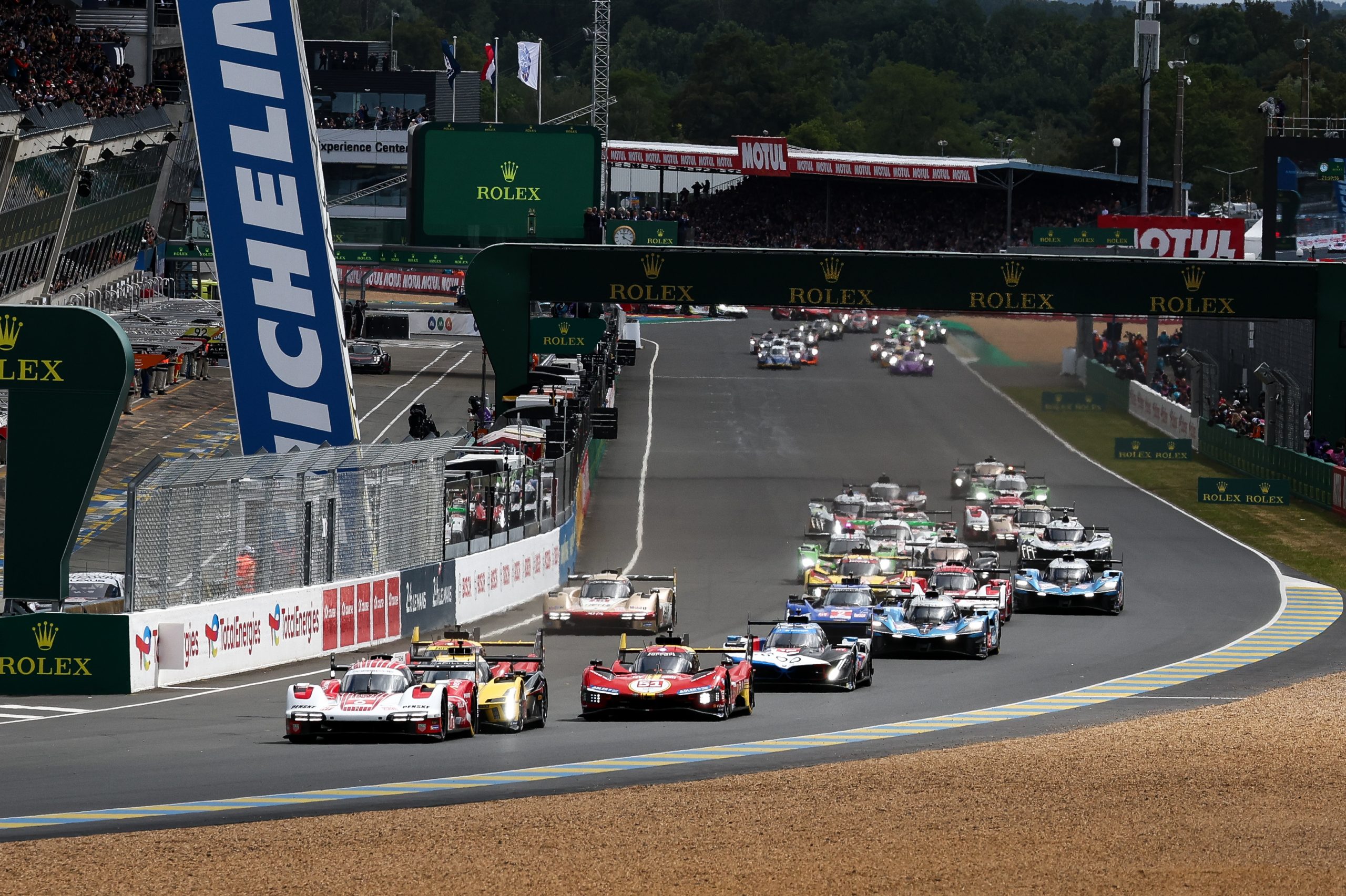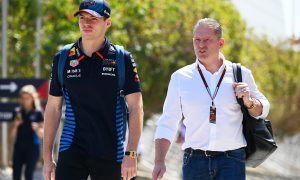
Toyota Gazoo Racing’s #8 car driven by Ryo Hirakawa, Brendon Hartley and Sébastien Buemi leads the 24 Hours of Le Mans after 17 hours following a lengthy Safety Car period that neutralized the race for more than four hours due to heavy rain.
Remarkably, due to the disrupted circumstances, a total of eleven Hypercars were on the same lap with seven hours to go, with Porsche Penske’s #6 car of Laurens Vanthoor, Kevin Estre and André Lotterer running second just 1.2s behind the leader.
Toyota’s #7 car of Nyck de Vries, Jose Maria Lopez and Kamui Kobayashi was third ahead of the first Ferrari 499P, the #50 entry of Nicklas Nielsen, Antonio Fuoco and Miguel Molina.
The rain lifted shortly after 8:00 am which allowed race control to begin the process of resuming the race after the longest Safety Car period in the event’s history.
Saturday’s proceedings saw Ferrari’s #50 car take charge from the outset from polesitter Vanthoor’s Porsche. But the AF Corse’s second entry of Antonio Giovinazzi seized the runner-up to make it a Ferrari 1-2 during the first hour.
Light rain led to a flurry of strategy calls, with the front-runners split between remaining on slicks and mounting inters.
Amid the gyrations, Robert Kubica’s #83 499P took the lead where it would remain for the next five hours.
However, into hour 8 and, while attempting to lap the #15 BMW Hypercar of Dries Vanthoor, Kubica tagged the Belgian driver’s car, sending the latter heavily into the barriers and out of the race.

The incident required a lengthy repair job to the Armco that led to an over 90-minute neutralization.
The crash also proved costly for Kubica and his teammates as the #83 Ferrari was hit with a 30-second stop/go penalty that sent the yellow machine down the order.
Meanwhile, the unassuming Toyota team progressed to the head of the field with its #8 car, with Porsche’s #6 machine close behind.
Unfortunately for Alpine, both of its cars retired in the opening 12 hours, due to a "suspected engine issue".
Well into the night – or into the morning – the rain started to pummel down which triggered another neutralization which remained enforced as night merged into dawn.
At 9:00 am, proper racing was underway once again, but track conditions remained treacherous, with many wet patches forcing drivers to remain attentive and extra cautious.
Keep up to date with all the F1 news via Facebook and Twitter






